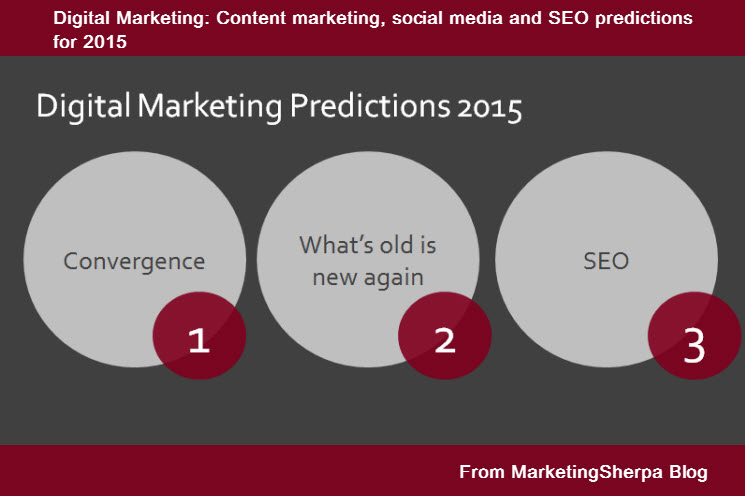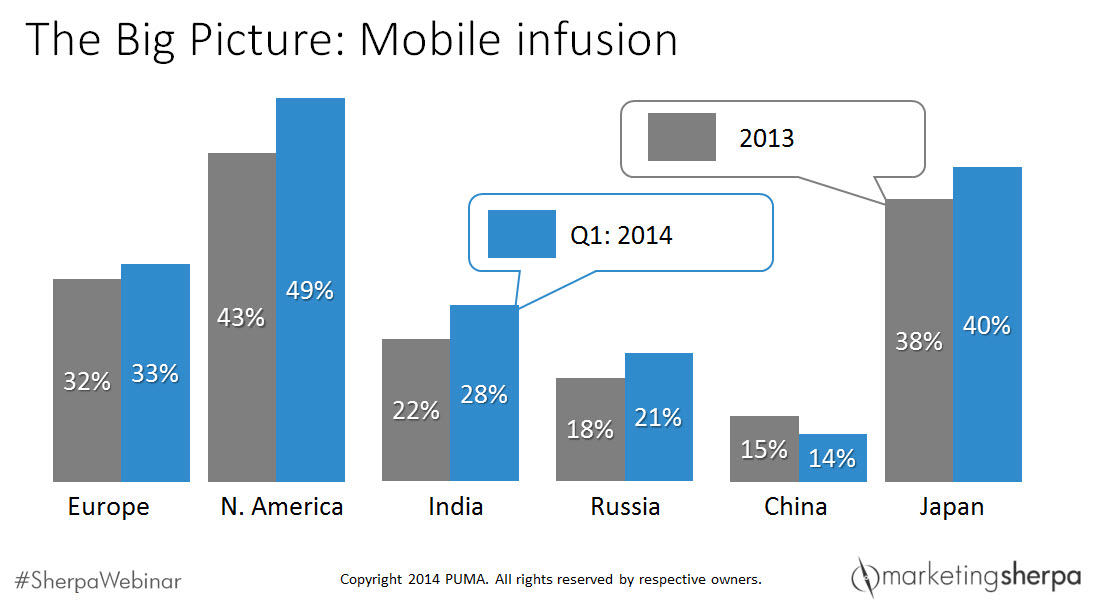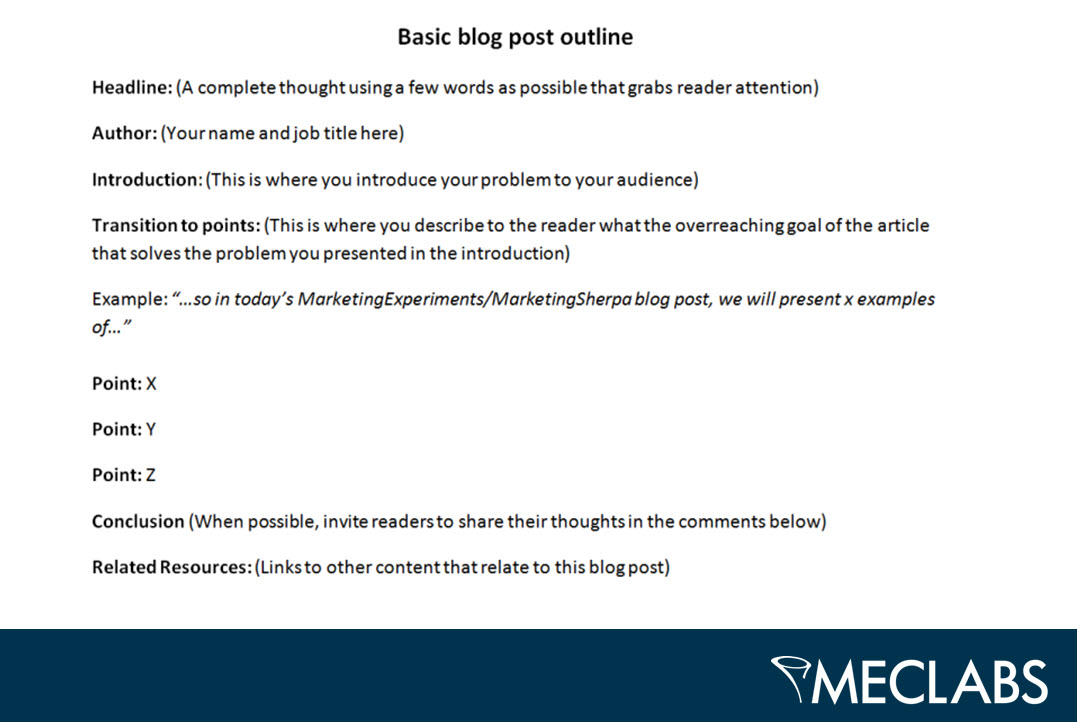Digital Marketing: Content marketing, social media and SEO predictions for 2015
Every year at Email Summit, we ask marketers for their predictions.
Before MarketingSherpa reporter Courtney Eckerle interviews you about your marketing predictions in the Email Summit Media Center, I figured it was only fair to put a stake in the ground and make some predictions you could hold me to as well.
Prediction #1: Convergence is the watchword for digital marketing this year
You’ve already seen (and will continue to see) convergence among marketing and business software platforms, and this trend will continue to grow as the line blurs between publishers, brands and marketing agencies.
Curve by Getty Images. Verizon’s experiment with Sugarstring. And, of course, The Red Bulletin. More and more brands are learning the power of building this kind of one-to-one connection with their audiences, building an owned audienc, and not having to borrow interest from television or other content creators.
At the same time, publishers are creating content for brands with their own agency arms, as well (a bit of a blast from the past when newspapers used to help create ads to sell media space).
Tribune Publishing (which owns the Chicago Tribune, Los Angeles Times and other dailies) bought a stake in Contend, a content agency that creates branded campaigns. Onion Labs, The Onion’s in-house ad agency, has made some seriously cool campaigns. Condé Nast, publisher of Vogue, Vanity Fair and GQ recently hired a director of branded content and launched a branded content shop which blurs the line between editorial and promotion.
Advertising and marketing agencies, more threatened than ever by brands and publishers, will try to get an ownership stake in the ideas they help create, like Anomaly did with EOS cosmetics or how 37signals went from being a website redesign shop to a software company selling Basecamp.
Data, will of course, be huge. This will be of benefit to content creators of all stripes listed above. Since they have the traffic and relationship with the audience, they have the ability to learn the audience’s preferences based on their behavior, and then engage in A/B testing with these audiences to build a strong understanding of the products, services and offers that these customers will most respond to.
But behind it all, let’s not overlook the people with the knowhow to make it happen, which can be a scarce resource — brilliant, brilliant marketers, writers, designers and data scientists.
Being able to navigate this land of data and convergence, networking and real relationships will be critical for the marketer to build cross-functional teams that understand all the elements it will take to be successful — content, technology, data and strategy. That’s one reason we pay so much attention to the audience experience and foster interactions and networking at Email Summit.















